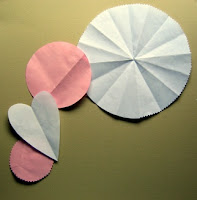Ryan loves to play with his 4-D dinosaurs all the time. Therefore, I've thought of capturing this moment for him to cherish in future.
The title of this layout actually came from my screen name. Ryan often forgets and refuses to eat his meals when he is playing with his dinosaurs just liked when I forgets my meals when I'm scrapping. That's why I've gave myself the screen name "Scrapperlicious". I guess for Ryan dinosaurs are more delicious than his meals. Therefore, I've named the layout "Dinolicious".
I've used various techniques in this layout.
First of all, I've used the "Inking In Layers with Masks" technique (refer to tips and tricks section) for the dinosaurs bones or fossils.
Secondly, I've created an acrylic paints frame to frame the photograph. (Refer to "Create a Frame Using Acrylic Paint" in my tips and tricks section)
Thirdly, I've created a Dino Autograph using "Toys as Stamping Tools" technique. (Refer to my tips and tricks section)
This a multi-techniques layout that I've had so much fun while creating it.

.JPG)
.JPG)
.JPG)
.JPG)
.JPG)

.JPG)

.JPG)
.JPG)
.JPG)
.JPG)
.JPG)
.JPG)
.JPG) Details on page 2:
Details on page 2:.JPG)
.JPG)
.JPG)
.JPG)
.JPG)
.JPG)
.JPG)
.JPG)
.JPG)
.JPG)
.JPG)


.JPG)
.JPG)
.JPG)

.JPG)
.JPG)
.JPG)
.JPG)
.JPG)

.JPG)
.JPG)
.JPG)
.JPG)
.JPG)
.JPG)

.JPG)
.JPG)
.JPG)
.JPG)